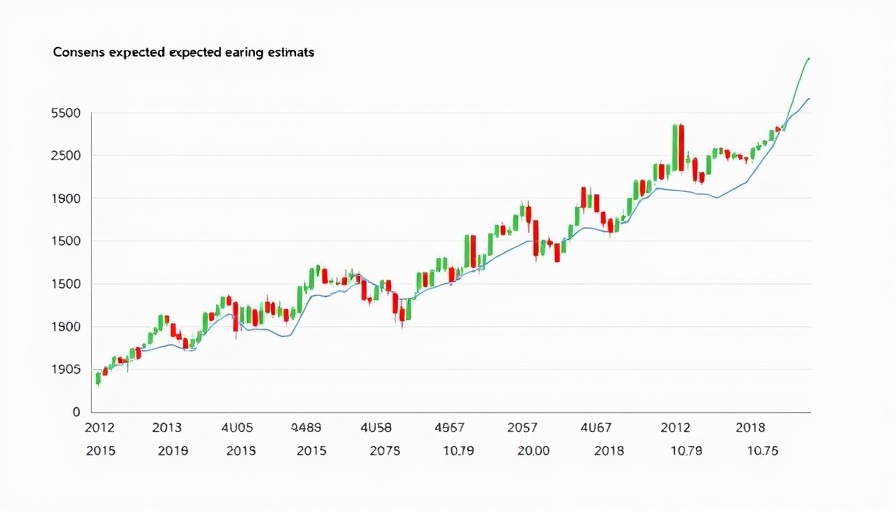
The Diverging Perspectives of Stock and Bond Markets
As we navigate the currents of economic forecasting, the stock market and bond market present a strikingly divergent outlook on the future of the U.S. economy. While the stock market radiates optimism, demonstrating higher equity prices and positive earnings growth, the bond market expresses caution, hinting at a slowdown.
Understanding the Economic Disconnect
In a recent analysis, Apollo's chief economist Torsten Slok pointed out this significant disconnect between the two markets. Traders find themselves in a complex environment where cyclical stocks have been outperforming defensive picks, reflecting an overarching optimism regarding economically sensitive sectors. On one hand, you're witnessing the S&P 500 inching close to record highs, while on the other, bond yields are pricing in Federal Reserve cuts, indicating potential stagnation.
Slok's assertion that either equity analysts are overly optimistic or economists far too pessimistic highlights the quandary faced by investors. The yield on 10-year Treasury bonds, which have seen a recent climb, contrasts starkly with the buoyant stock market, prompting a deeper examination of market behaviors.
Recent Market Trends: A Closer Look
This year, notable upward revisions in the S&P 500’s year-end price targets by institutions like Goldman Sachs and Bank of America signal renewed confidence among stock analysts. For context, Bank of America raised its projection from 5,600 to 6,300 while Goldman Sachs elevated its target from 6,100 to 6,600, following initial concerns during the tariff rollout by the Trump administration.
Interestingly, the anxiety surrounding tariffs appears to have dissipated among traders, with projections for a recession dropping dramatically from nearly 70% to just 20% over the past few months. Such shifts indicate a profound change in investor sentiment.
The Role of Tariffs and Economic Policy
However, the complexities of economic indicators remain. Slok's analysis points to stagflationary risks tied to tariffs, corporate sentiment shifts, and potential consumer price increases driven by immigration policies. “The bottom line is that we should see inflation move higher over the coming months,” Slok concludes, arguing that the consensus anticipates rising consumer prices.
This raise in inflation expectations stands in stark contrast to the present optimism in the stock market. Confidence in economic resilience may reflect a disconnect—one that could lead to challenges in corporate earnings if inflation rises more rapidly than anticipated.
The Impact of Consumer Sentiment and Investment Trends
Recent collaboration from behavioral economists suggests that consumer sentiment plays a crucial role in shaping economic outcomes. When consumers feel confident, they are more likely to spend, which promotes growth. However, if inflation bites into their savings, the ripple effect could be significant, paralleling slumps in related investments.
Examining sectors, cyclical stocks may outperform due to their alignment with robust economic forecasts. However, if inflation materializes as predicted, sectors reliant on consumer discretionary spending may face headwinds, redefining the landscape for investors.
Looking Ahead: Predictions and Opportunities
The intersection of stock and bond markets provides a fascinating case study in economic forecasting. As we look forward into 2025 and beyond, investors need to consider the mixed signals from both markets. It prompts the question: Will the stock market's bullish trend continue to thrive, or will underlying fears about inflation and tariffs ultimately sway investor confidence?
Furthermore, the evolution of technology-driven sectors is likely to forge new paths amidst these shifts. Innovations in AI, biotechnology, and cryptocurrency are reshaping the investment landscape, and understanding these trends will prove essential for investors aiming to leverage opportunities.
Summary: Navigating the Markets Amidst Uncertainty
In summary, the contrasting views from the stock market's optimism and the bond market's caution beckon investors to evaluate their strategies critically. The current economic atmosphere is layered with unpredictability, influenced by technological advancements that will continue to reshape conventional economic theories and market behaviors.
As you assess the potential impact of tariffs and inflation, coupled with the strides made by innovative technologies, remain aware that understanding these dynamics could fortify your investment outlook.
 Add Row
Add Row  Add
Add 




Write A Comment